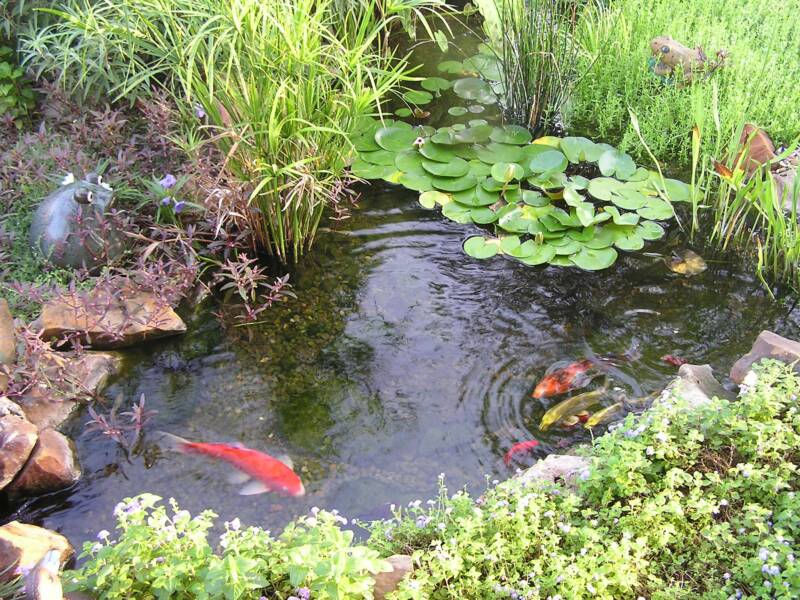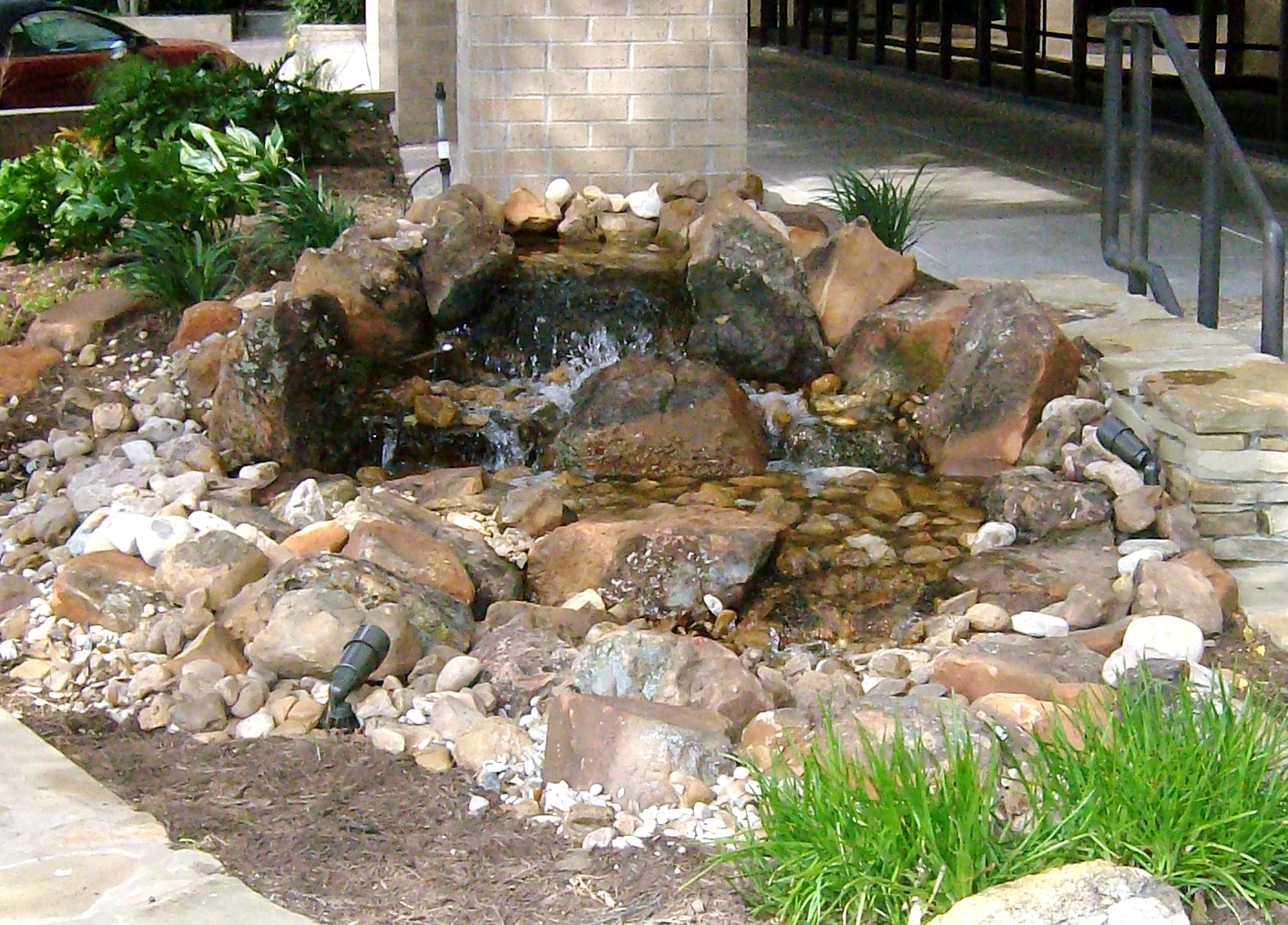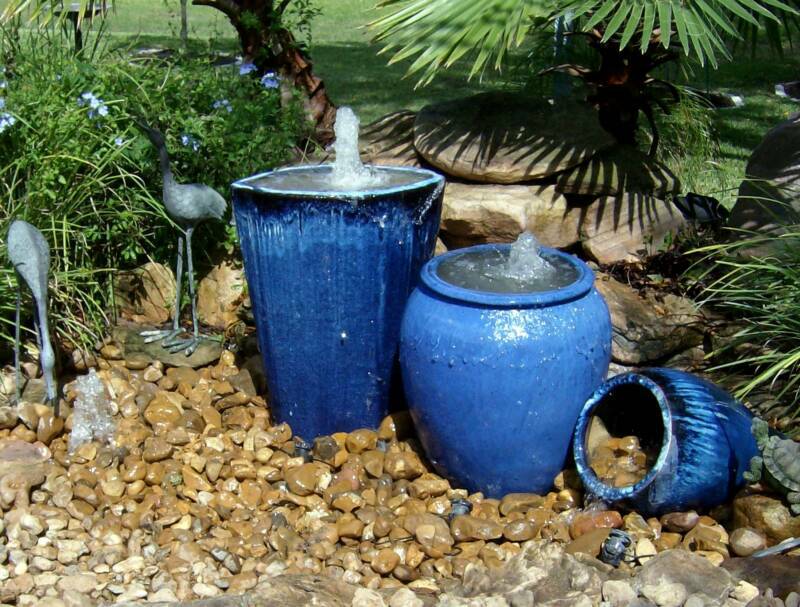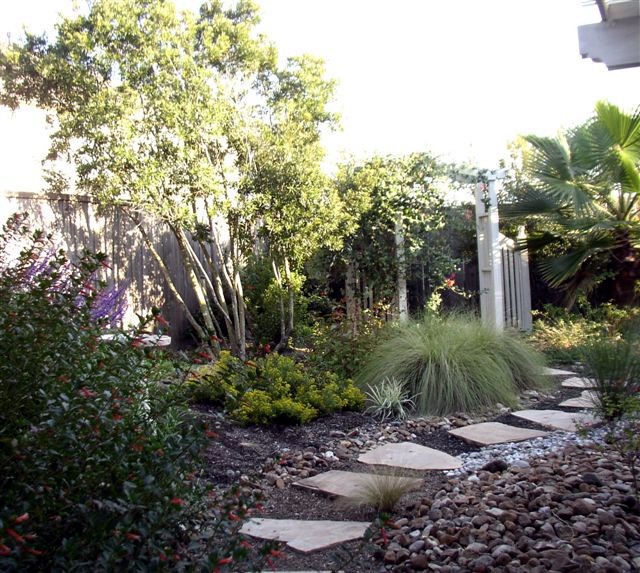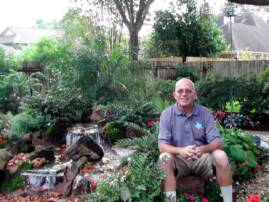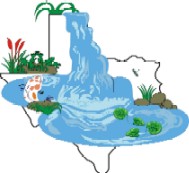


Rainwater Harvesting
Organic Ecosystem Ponds
Pondless Waterfalls
Urn and Fountain Features
Water-Wise Landscapes
Meet Your Water Feature Professionals


Texas Ponds and
Water Features
Joining a Pond Club
by Matt Boring
“The Natural Water Gardener”
Whether you’re a veteran ‘ponderer’, a newbie, or you’re interested in pond ownership, but haven’t yet taken the plunge, you may enjoy visiting with other people who share your pursuit of things aquatic. One of the easiest ways is to attend a meeting (or ideally, more than one) of a ponding club of some sort. Almost every large metropolitan area has at least one pond or Koi society that would welcome you as a visitor or a new member. Since ponding has become such a popular hobby, similar groups are popping up in smaller towns as well. Definitely the largest, the North American Water Garden Society, or NAWGS, covers all of North America by supporting the formation of local chapters.
What will you find at these meetings? Well, Koi societies tend to be populated with Koi fanatics. They truly prize the beautiful Japanese Carp, know one variety from another, and can tell you everything about shape, coloring, markings, and everything that makes one Koi a champion and another Koi a dime-a-dozen variety. They enjoy raising and showing Koi in competitions and will sometimes travel a long way to see a Koi show or competition. Koi people tend to be more particular about pond depth and are convinced that their ponds require elaborate filtration systems that require frequent cleaning. Most will tell you that you absolutely cannot have rocks and gravel in your pond, that you must have a UV sterilizer to keep your water clear, and that pH levels must be frequently monitored and adjusted. To them, the pond itself seems secondary to the colorful creatures that inhabit it.
Although pond societies may also attract a few Koi fanatics, they tend to be filled more often with people who enjoy the lifestyle pond ownership provides. These people love the addition that a flowing waterfall and pond make to their landscapes and their lives. These are the guys and gals that can’t wait to get home after a long day at work, prop their feet on the deck rail and melt away into a world of relaxation as the constant sound of gently flowing water seems to wash away the stresses of the day. While most people’s ponds feature some Koi, we aren’t as particular about shapes, markings, and stuff like that. As long as we like the colors and enjoy watching them slowly exploring their underwater home, we’re happy.
Pond societies are populated by people who have designed and built their own ponds, people who have installed a ready-made pond kit, people who have had their pond professionally installed, and anything in between. Some members are also professional pond installers. People’s attitudes run the gamut from militants, who insist that ponds should be built and function one certain way to the exclusion of all others, to people who could care less how it works- just as long as it works.
When I first started building ponds, I came into the Austin Pond Society with a militantly organic attitude and for that I hereby apologize publicly. I felt like building a pond that nature will help regulate via a balanced aquatic ecosystem eliminated most, if not all, the problems that people with more traditional pond systems experienced and that everyone should ditch the old ways of doing ponds and step into the future. I felt like I was the lone prophet preaching the gospel of organic ponding to the religious followers of the established pond industry. What I didn’t realize at the time was that some of these people had become so used to dealing with the problems inherent in their old systems that they no longer considered them problems. In fact many of them seemed to live to perform service on their ponds. One man I met had to spend 45 minutes every day taking apart, cleaning, and reassembling his filter. He couldn’t conceive of a pond ecosystem that only requires a yearly filter cleaning. Others had more trust in the complex maze of PVC piping and valves taking up half their garage than a simple biological filter that’s completely hidden inside a waterfall coupled with a skimmer that removes most windblown debris from the surface of the water.
If you’re looking for advice about how to construct your pond, you’re likely to hear all kinds of advice, each based on the experience of the person doing the talking. Most of these people have owned no more than a handful of ponds in their lifetime, so often their advice is limited to their experiences and things that they’ve read or heard. Professional pond installers usually have more experience, but some people tend to be wary of our advice, lest we be simply trying to sell them something. Plus, different installers have different philosophies about how a pond should function. Perhaps the best way to get ideas os to attend a Parade of Ponds, Pond Walk, or Pond Tour. These events usually put you one-on one with the pond owner and they can relate their experiences to you directly. Plus you get to see different layouts and check out the building styles of different contractors.
Unfortunately, you need to take advice you get from pond societies with a grain of salt. For years, newly-formed pond societies were largely supported by local pond supply retailers. These retailers were able to guide the philosophy of the pond society until it became the mindset of the majority of members. The members appreciate the help and guidance so much that they don’t even realize that they’ve now been programmed to think of the helpful advice as the written-in-stone truth about the way ponds should be built and should function, conveniently based on whatever product line that retailer happens to be marketing. So inevitably, many pond societies end up firmly in the back pocket of the retailer or retailers who helped them get started. The pond society then becomes just another advertizing arm of the retailer, and a very effective one at that. For instance, the pond society in the largest city in Texas will only allow its pond tour tickets to be sold at the location of their favorite retailer, thereby forcing anyone who wants to attend the tour into the doors of said retailer. How nice for them.
A notable exception to this trend in the state of Texas is the Waco Pond Society, whose membership is almost all of the organic persuasion. Many of their filters are of the homemade variety, although they all function basically the same way my ponds do– a balanced aquatic ecosystem is created and allowed to pretty much take care of itself. It’s amazing what nature can and will do if given the chance. The fish graze on any algae that forms on the rocks of the pond, their waste is converted by beneficial bacteria into nutrients that are usable to the plants, and the aquatic plants remove the excess nutrients from the water, preventing an uncontrollable algae bloom. Best of all, they seem to have arrived at the organic philosophy based on their own experiences, not by having it spoon-fed to them by a local retailer.
All in all, pond societies are a great place to meet people with similar interests, to show off photos of your pond, and even to get aquatic plants, as many of them sponsor annual plant swaps, where members bring excess aquatic plants from their pond and trade with other members. You can search the internet to find a pond club in your area or go to NAWGS.org if you’re interested in starting a local chapter in your community.
Until next month.............................................
Happy Pondering!

